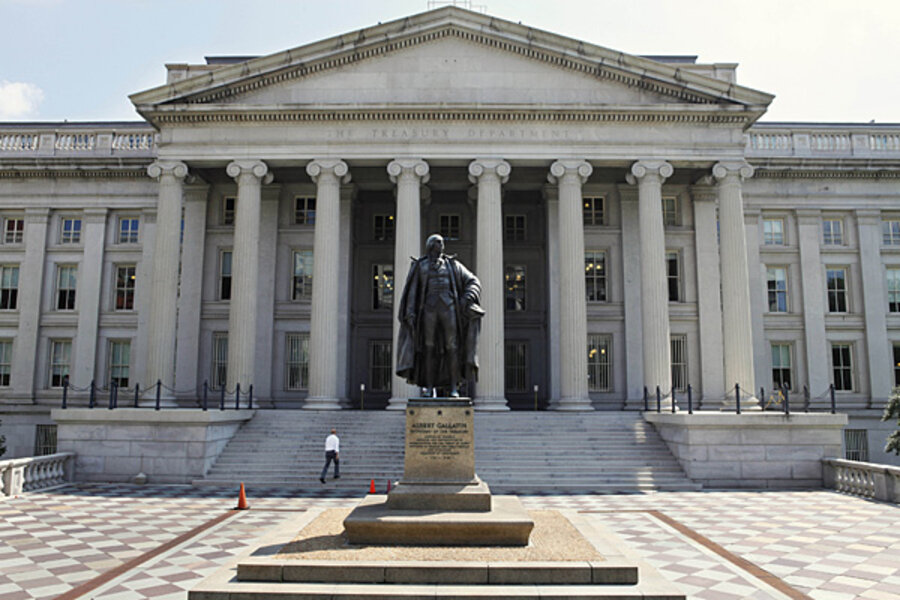Tax reform: how to fix the international tax mess
Loading...
There may be no more vexing challenge in the Revenue Code than the taxation of foreign transactions of multinational companies. Most everyone agrees that the current system is a mess. And corporate tax reform is impossible without addressing international issues. Yet, this corner of the tax law is not only immensely complex but most proposed solutions inevitably run into massive political and policy roadblocks.
In an attempt to surmount those hurdles, two highly-respected international tax economists have proposed an intriguing solution—a corporate minimum tax that allows firms to immediately expense the costs of their foreign investments instead of depreciating them over a period of years.
The proposal was devised by Rosanne Altshuler of Rutgers University (a former director of the Tax Policy Center) and Harry Grubert, a career economist at the Treasury Dept. While Grubert works for the Treasury, the proposal in no way represents the views of the Treasury or the Obama Administration which, in fact, has proposed its own, quite different international tax plans.
There are two basic problems with the taxation of multinational corporations:
U.S.-based multinationals face a 35 percent statutory rate, the highest in the world when combined with the average state corporate tax. They must pay this tax on profits they earn in the U.S as well as on overseas earnings returned home. Yet they must compete with overseas firms that pay low tax rates on their own domestic investments and no additional home country tax on active profits from investments in other countries (including the U.S).
At the same time, U.S.-based multinationals have lots of ways to drive down their effective tax rates. To oversimplify a bit, they pile as much income as possible into foreign subsidiaries that are located in very low-tax jurisdictions. At the same time, they load as many expenses as they can on to their U.S. entities where tax deductions are more valuable (a deduction is worth 35 cents on the dollar here, but only one-third of that in Ireland, where the rate is 12.5 percent).
This all works because the U.S. allows companies to defer U.S. tax on foreign earnings until those profits are returned to the U.S. And many multinationals never bring the money home. By some estimates, $2 trillion in foreign profits are stashed overseas.
Rosanne and Harry estimate that nearly half of this foreign income is subject to tax rates of less than 10 percent. And, they calculate that the marginal effective tax rate on investment by a U.S. firm in a low-tax country is, remarkably, a negative 24 percent.
How can the U.S. stop this erosion of the corporate tax base while keeping U.S. based firms competitive in international markets? There is no simple solution. Obama has proposed a couple of plans. House Ways & Means Committee chair Dave Camp (R-MI) has laid out three options. But each idea has problems, including great complexity that itself opens the door to more gaming.
Grubert and Altshuler have devised what many think is an elegant solution to both the competitivesness and the base erosion problems. They’d do it through a series of trade-offs. U.S. firms could effectively exempt from U.S. tax their normal profits from actual overseas investments by deducting their capital costs. They could also avoid tax on the dividends they bring home from foreign subsidiaries. But they’d have to pay a 15 minimum tax on the income of their overseas affiliates. As a result, they’d lose some of the tax benefits of artificially shifting income to low-tax countries by, say, moving patents or the value of their brand to offshore subsidiaries.
They’ve developed two versions of the minimum tax. One would require firms to calculate their tax separately for each country in which they do business. The second would allow firms to aggregate their tax liability across all countries.
Either way, the minimum tax dramatically increases effective taxes on foreign investment—money that could be used to buy down U.S. corporate tax rates, reduce the deficit, or both. Grubert and Altshuler figure the rate on investment in a low-tax country would rise to a negative 4.4 percent under the per-country version, far higher than the negative 24 percent under current law.
Strange as it sounds, their goal is to raise the effective tax rate on foreign investments by U.S.-based multinationals to zero, or close to it.
This is complicated stuff and international tax experts will surely identify problems with Grubert-Altshuler plan. At a conference last week cosponsored by the American Tax Policy Institute and Rice University’s Baker Institute, General Electric’s tax guru John Samuels raised a long list of concerns. But even John praised their idea as a “fresh look” at a vexing problem.
We are just beginning what will be a very long and complicated discussion. But the Grubert-Altshuler paper makes the conversation much richer.







